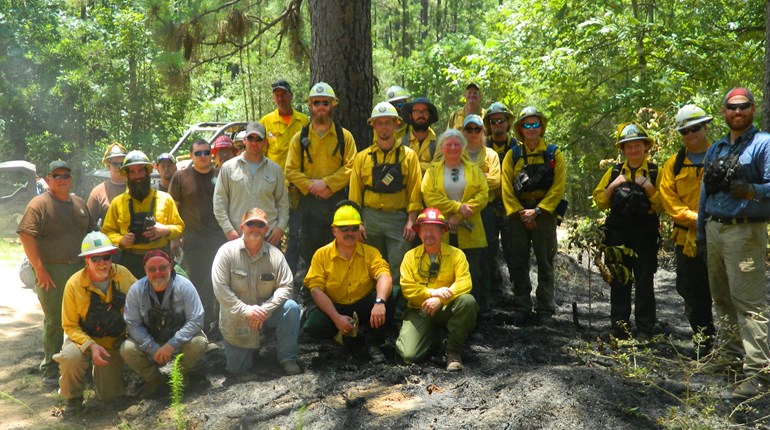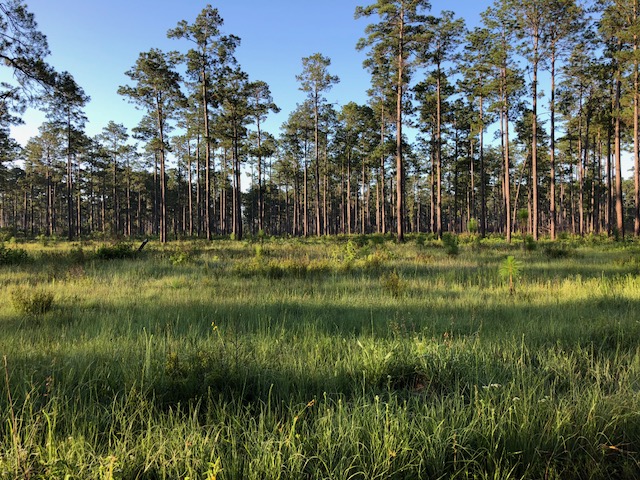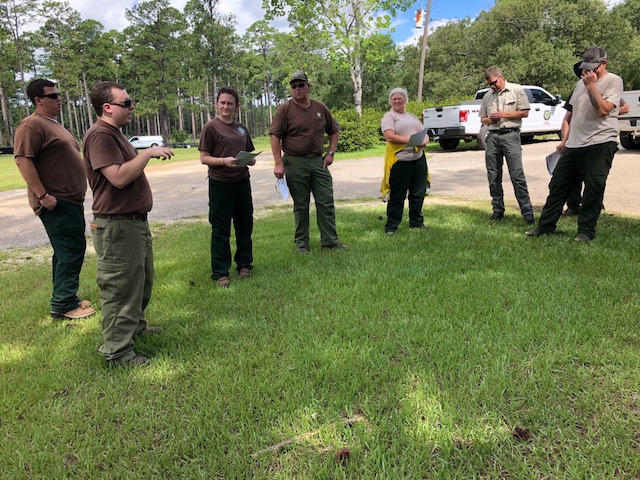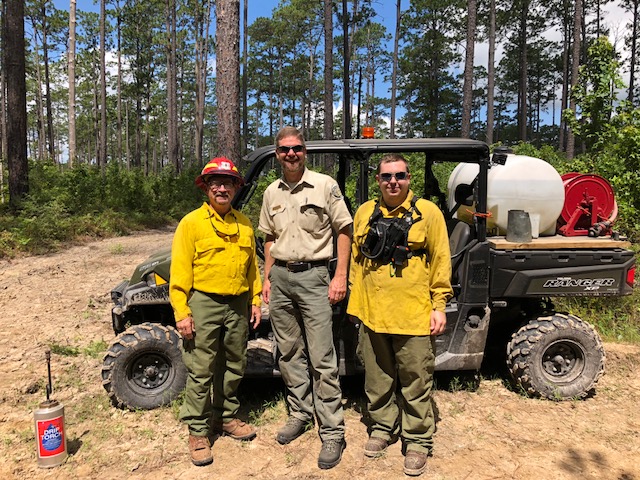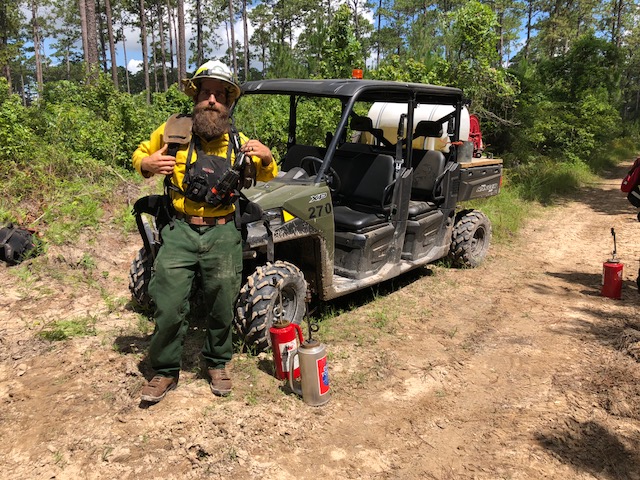The Texas Longleaf Team assisted with the June 24-27, 2018, Texas Department of Agriculture's Certified and Insured Prescribed Burn Manager Course held in Jasper. I was one of several instructors helping the Texas A&M Forest Service. Participants included land owners, agency staff, and staff from several commercial burning companies. Successful completion of the course includes a final exam and participating in the required training burn. Since the training was offered in mid-summer, we had a unique opportunity to showcase the benefits of doing a growing season burn.
Some thoughts to consider about a June burn with temperatures around 90. Yes, you can burn longleaf in warm, mid-summer conditions. Summer burning will help control woody invasive species such as yaupon, myrtle, and sweet gum. This method is a great way to prepare the seed bed for cone fall and natural regeneration under longleaf where the shrub layer prevented seed catch and germination. Prescribed burning can be a good alternative to using herbicides. If your property has been burned regularly in the dormant season, you may want to consider a growing season burn. The seasonality of burning will affect the understory vegetation and shift composition. Winter only burning allows rapid rebound of yaupon infestations and it can reclaim its 3 to 4 foot height in two years after a winter burn. Burn that same infestation in the growing season and enjoy a longer lasting control.
Fire can be a cheaper tool than herbicide treatments and it generally favors the retention of the herbaceous ground cover beneficial to wildlife. Growing season and summer burning can shift the ground cover composition of the fuels from shrubs to grasses.
Here are observations from Ben Plunkett of the Texas A&M Forest Service as he implemented the June 26th burn on the E.O. Siecke State Forest east of Kirbyville. The growing season burn was completed under a mature overstory of 60 to 80 year old longleaf with an average BA of 50. The stand was being invaded by woody competition: yaupon, wax myrtle, and sweet gum. Mid-summer burning was a new experience for many of the 26 burn participants. The outcome was excellent with minimal crown scorch and 80-90% control of target species. Plunkett was pleased to see the effectiveness of summer burning where he had cured light fuels of perennial grasses to carry the fire. Plunkett said they traditionally do dormant season burning, but “this expands our burn windows” allowing more of the calendar for burn projects. They saw little mortality of young longleaf in the stand. I asked Plunkett to check the burn again last week, mid-October, and observe the response of the warm season grasses that we wanted to preserve. He reported that yes, we had cooked off much of the vegetative material in the burn, but response was good. He saw bluestem grass fully recovered with seed stalks elongated, flowering and making seed. This is another excellent outcome. Kill the yaupon and favor more grassy fuels.
Disclaimer, you can kill or damage your standing crop trees unless the burn is carefully planned and executed by trained and experienced burn crews.
